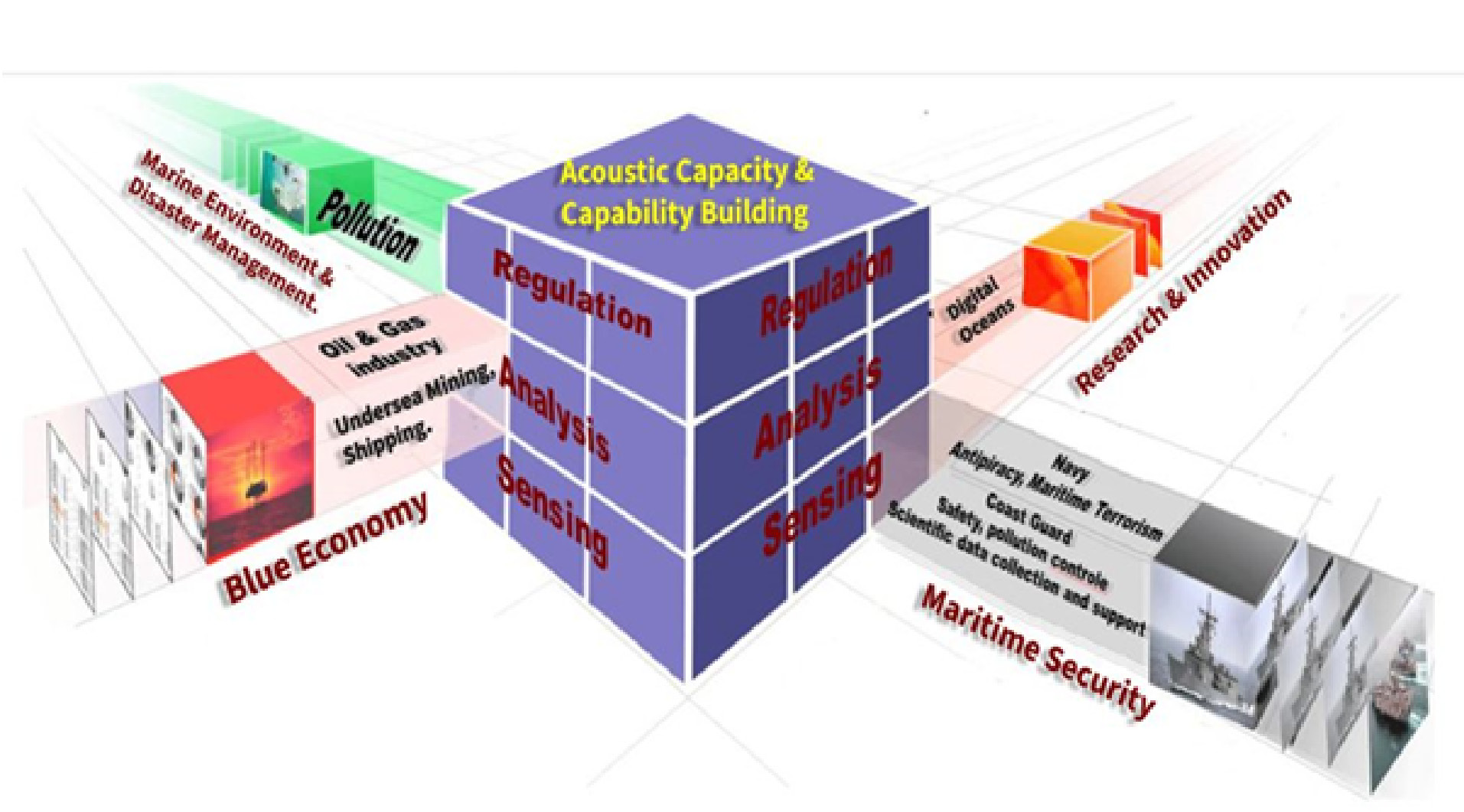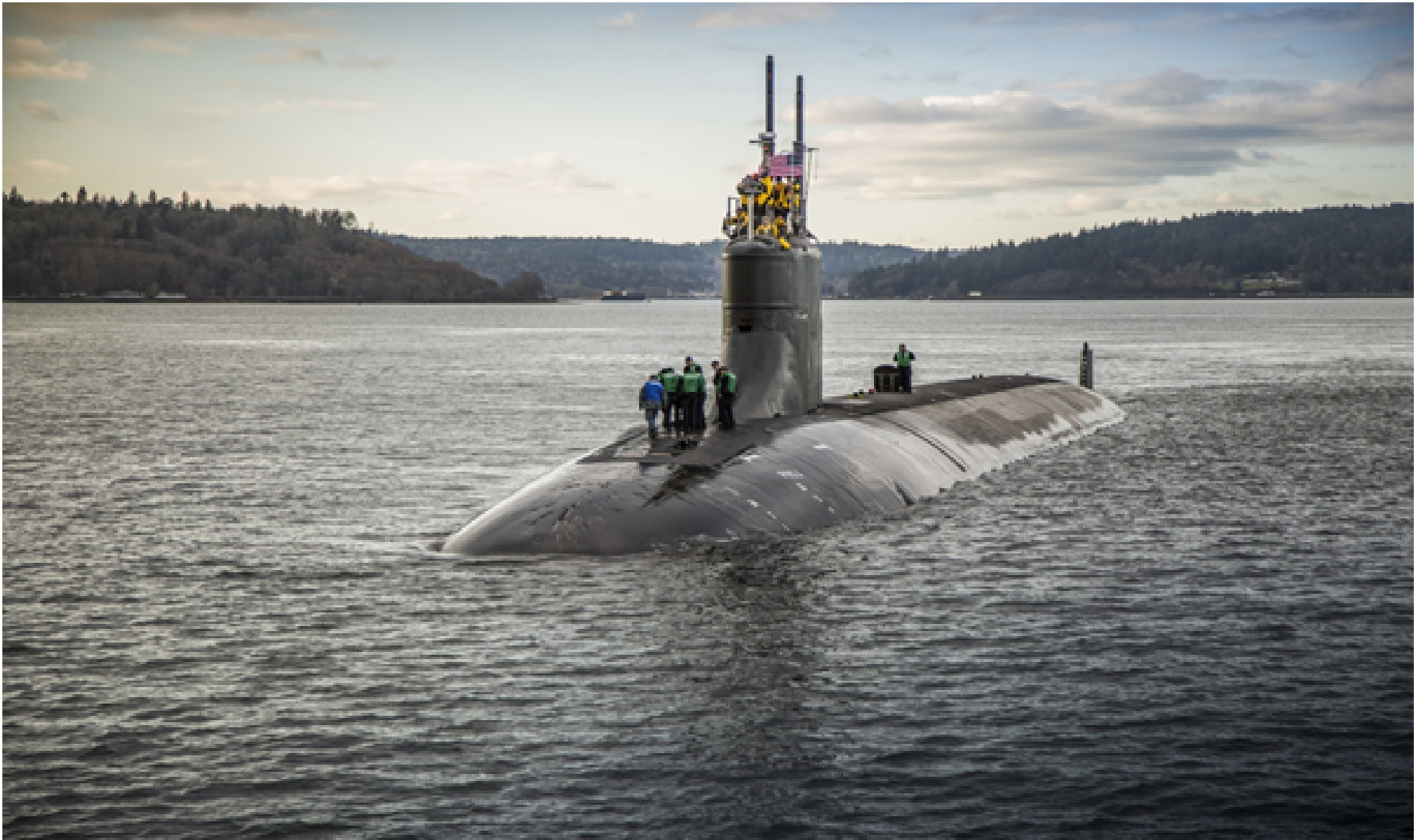Underwater Domain Awareness (UDA) framework is a unique perspective in the new global order.
Australia, the United Kingdom and the United States coming together under the AUKUS was one of the major declarations of 2021, that will have significant geopolitical ramifications going forward. This declaration will ensure massive geostrategic realignments with far-reaching political, economic and military implications. It also reaffirms the Indo-Pacific strategic space emerging as the centre of gravity in the global powerplay. Australia moving on to a nuclear submarine program, in spite of not having a civilian nuclear program yet is interesting from a geopolitical and geostrategic perspective. Australia possesses the third largest deposits of uranium in the world, with 33% of the deposits, after Kazakhstan and Canada.
In the face of it, the AUKUS has been touted as Australia getting access to sensitive US technology to acquire nuclear powered hunter-killer submarines along with cooperation in other strategic areas, including underwater technologies. On deeper analysis, Britain is being seen as the biggest beneficiary of the entire military-industrial complex that will come up to ensure design and development of these high-tech submarines. Post Brexit, the entire European Union strategy for the Indo-Pacific has been turned upside down with this one single announcement of AUKUS. This happened on 15 September 2021, just a day before the presentation by the President of the European Commission, Ursula Von der Leyen, to the European Parliament of a Franco-German inspired major policy paper on the EU strategy for the Indo-Pacific. Even other strategic alliances like Quad and the Five Eyes have been turned on their head. France is presumably the biggest loser, and they have made their displeasure known diplomatically, to both Australia and the US. However, Anglo French relations seem to be business as usual, although it has been a big gain for UK at the cost of France.
The AUKUS is further going to accelerate the ongoing submarine proliferation in the Indo-Pacific, with the nuclear submarine thrown into it in a big way. The smaller navies like Bangladesh, Myanmar and many more that are traditionally under-resourced have started acquiring such complex machines. The other major shift is that these navies are acquiring even second-hand submarines and from newer players like China, away from the well-established European manufacturers. The entire Indo-Pacific region is projected to have close to 250-300 submarines lurking in the waters by 2030.
During the second Submarine Operational Safety Conference (SMOSC) held in South Korea back in June 2016, Rear Admiral Timothy Lo, Republic of Singapore Navy (RSN) Head of Naval Operations, said: “Over the last 10 years or so, we have seen a proliferation of submarines and submarine-operating navies. When the underwater environment becomes more crowded, the risk of an inadvertent collision is higher.”
The Indo-Pacific strategic space is defined as the tropical water of the Indian and the Pacific Oceans. The tropical water, acoustically are known to be shallow due to the thermocline, resulting in excessive interaction of the acoustic signal with the surface and bottom boundaries. The multipath propagation in the tropical littoral waters causes the sub-optimal performance of any sonar deployed for Underwater Domain Awareness (UDA). The degradation of performance, is of the order of 60%, compared to the polar region where these technologies evolved during the Cold War era. The depth of Sound Axis (line joining minimum sound speed) in the polar region is of the order of 100 m, whereas at the Equator it is at 1,800 m. The depth of the Sound Axis determines the acoustic propagation characteristics of the underwater signal. The Cold War era saw significant investment from the superpowers in field experimental work in the Greenland-Iceland-United Kingdom (GIUK) gap, to generate UDA. The sonar performance stabilised in these waters due to such efforts, however the tropical littoral waters present unique challenges that demand site specific R&D to understand the local conditions. However, such site specific field experimental R&D is extremely resource intensive.

On 2 October 2021, USS Connecticut, a US nuclear submarine reportedly hit an uncharted seamount in the South China Sea with significant damage to her hull and a few injuries among the crew. Eleven sailors were injured in the crash, which damaged the Connecticut’s forward ballast tanks and forced the crew to make a weeklong voyage on the surface to return to port. The Connecticut is one of three Seawolf-class submarines, which the US Navy describes as “exceptionally quiet, fast, well-armed, and equipped with advanced sensors”. The vessels have eight torpedo tubes and can hold as many as 50 weapons in its torpedo room. The accident was a major strategic embarrassment for the US Navy and only amplifies the challenges of UDA in the tropical littoral waters. Figure 1 shows the USS Connecticut (SSN-22) departing Puget Sound in 2016.
The enhanced submarine proliferation in the Indo-Pacific and the tropical littoral challenges as discussed above only make two critical points going forward in our strategic deliberations. The effective UDA is the single most important requirement in the Indo-Pacific and the tropical littoral challenges cannot be mitigated by the conventional approach of importing military hardware from the West. Indigenous effort customised to the local site specific requirement is inescapable. The vast blue economic potential is also attracting the extra-regional powers to maintain their strategic presence in the region and often encouraging them to meddle in the regional politics to ensure poor maritime governance.
Maritime Domain Awareness (MDA) became a key strategic terminology globally post the 9/11 incident. Massive mobilization happened largely backed by the US establishment to generate enhanced MDA. The 26/11 incident became a similar trigger in the Indian Ocean Region (IOR), and the entire Indian establishment started to mobilize resources to generate MDA. However, the conventional MDA remained a security driven formulation with minimal participation from the other stakeholders. As a result, it was limited to the surface with little penetration to the underwater, given the complex challenges in ensuring effective UDA. The highly resource intensive field experimental R&D required for enhanced UDA in the tropical littoral waters is not politically viable for developing nations in the Indo-Pacific region.
The Maritime Research Centre (MRC), Pune in partnership with the M/S NirDhwani Technology Pvt Ltd (NDT) has proposed a unique UDA framework that encourages pooling of resources and synergising of efforts across the stakeholders namely, the maritime security, blue economy, environment and disaster management and science and technology. Even nations in the region with diverse geopolitical leanings can come together to collaborate on issues of environment and disaster management. This will encourage higher deployment of Science & Technology (S&T) across application for diverse stakeholders. Figure 2 presents the UDA framework.
The four faces of the cube, represent the stakeholders with specific requirements, however in the tropical littoral waters of the Indo-Pacific, the core requirement will remain acoustic capacity and capability building. Unless the sonars perform, there will be no viable solution. The horizontal construct thus represents the resource availability in terms of technology, infrastructure, capability and capacity, specific to the stakeholders or otherwise. The vertical construct is the hierarchy of establishing a comprehensive UDA. The first level or the ground level would be the sensing of the undersea domain for threats, resources and activities. The second level would be making sense of the data generated to plan security strategies, conservation plans and resource utilization plans. The Artificial Intelligence (AI) and Robotics along with Signal Processing will be the core technologies. The next level would be to formulate and monitor regulatory framework at the local, national and global level.
Figure 2 gives a comprehensive way forward for the stakeholders to engage and interact. The individual cubes represent specific aspects that need to be addressed. The User-Academia-Industry partnership can be seamlessly formulated based on the user requirement, academic inputs and the industry interface represented by the specific cube. It will enable a more focused approach and well defined interactive framework. Given the appropriate impetus, the UDA framework can address multiple challenges being faced by the world today. Meaningful engagement of Young India for nation building, probably is the most critical aspect that deserves attention. Multi-disciplinary and multi-functional entities can interact and contribute to seamlessly synergize their efforts towards a larger goal. The UDA framework as a whole provides policy and technology interventions along with the acoustic capacity and capability building.
India is well placed to play a leadership role in the IOR, by progressing the UDA framework in the IOR and beyond. The Security and Growth for All in the Region (SAGAR) vision of the Honourable Prime Minister is better served with effective implementation of the UDA framework as proposed by MRC & NDT. 2022 should see major shift in our maritime push with enhanced focus on maritime governance and acoustic capacity and capability building driven by the UDA framework.
Dr (Cdr) Arnab Das is Founder & Director, Maritime Research Center (MRC), Pune.

